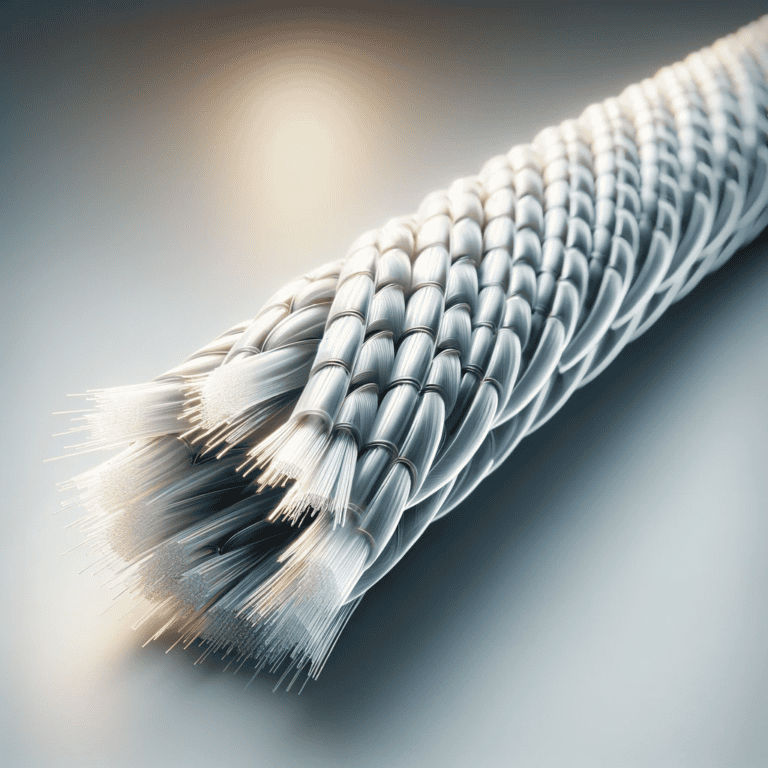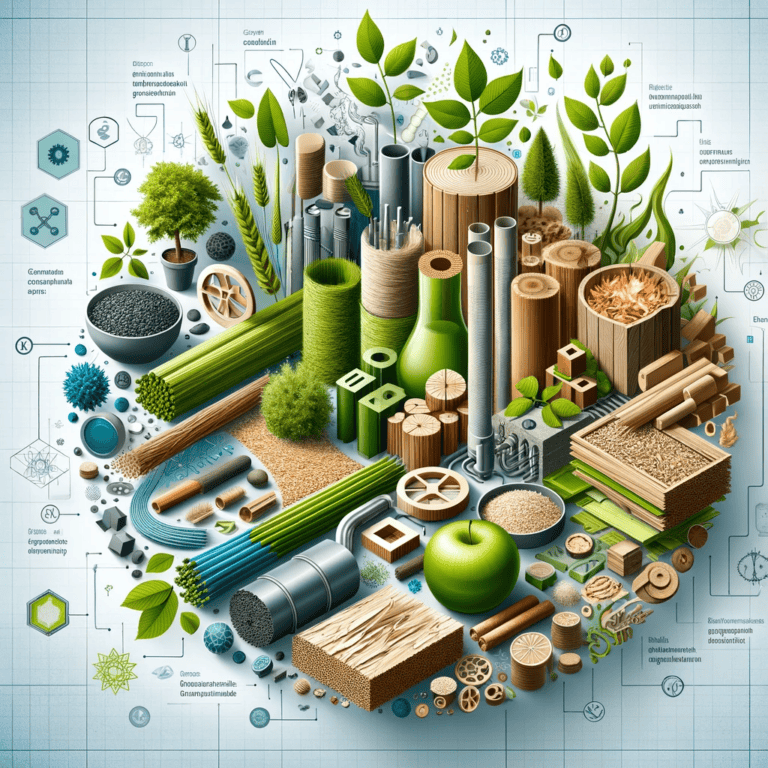Advances in Artificial Photosynthesis: A Review
This review delves into the latest developments in artificial photosynthesis, emphasizing novel materials and processes that improve sustainability and efficiency in the process of turning CO2, sunlight, and water into chemical fuels.

Introduction to Artificial Photosynthesis
In order to provide a sustainable energy source, artificial photosynthesis is a cutting-edge technology that attempts to mimic the natural process of photosynthesis, which turns carbon dioxide, water, and sunshine into fuel. This strategy has the potential to effectively overcome the problems associated with producing solar fuels and chemicals (Kornienko et al., 2018). While there are still many obstacles to overcome, the development of effective water oxidation catalysts (WOCs) is essential for building successful artificial photosynthesis systems (Ye et al., 2019). When it comes to using sunlight to divide water into hydrogen and oxygen in ambient settings, artificial photosynthesis has shown promise for exceeding natural photosynthesis in terms of efficiency (Dogutan & Nocera, 2019).
Artificial photosynthesis, which is modeled after natural photosynthesis and uses solar energy to convert CO2 into useful chemicals, presents a viable way to meet energy demands and address environmental problems (Wang et al., 2017). The potential for solar energy conversion to produce organic chemicals or fuel has been demonstrated by the integration of photocatalysts and enzymes in artificial photosynthesis systems, underscoring the adaptability of this technology (Yadav et al., 2012). Artificial photosynthesis offers a model for achieving sustainable energy supply in the future by using water splitting to capture solar energy (Qi et al., 2017).
The development of artificial photosynthesis systems has highlighted the necessity for novel approaches in this field by emphasizing the significance of responsive matrices and quantum coherent kinetic control in achieving high yields (Purchase & Groot, 2015). According to Zahran et al. (2019), immobilizing molecular catalysts on conducting or semiconducting substrates is crucial for creating effective water oxidation anodes and photoanodes for artificial photosynthesis devices. In nitrogen fixation with water, metal-free photocatalysts have demonstrated potential, opening up new possibilities for the development of artificial photosynthesis techniques (Shiraishi et al., 2018).
In order to improve photoelectrocatalytic water splitting in artificial photosynthesis systems, researchers have concentrated on imitating important aspects of natural photosynthesis, such as those of Photosystem II (Ye et al., 2018). The potential for extremely effective and robust artificial photosynthetic systems has been shown by hybrid systems that combine semiconductors as light harvesters and biomimetic complexes as molecular cocatalysts (Wen & Li, 2013). A scalable and sustainable method of generating solar fuels is using particulate photocatalyst-based artificial photosynthesis that uses water as an electron donor (Chen et al., 2018).
Artificial photosynthesis is a novel technology that has the potential to transform the generation of sustainable energy by effectively transforming solar energy into useful molecules and fuels. Through the utilization of novel catalysts and materials, artificial photosynthesis draws inspiration from natural photosynthesis and presents a viable approach to meeting the world’s energy needs and environmental issues.
Current Technologies and Materials
Modern developments in artificial photosynthesis materials and technology have made great strides toward improving productivity and resolving issues in this area. The application of semiconductor materials in artificial photosynthesis systems is one noteworthy area of progress. Research has demonstrated that one-dimensional III-nitride semiconductors can be used to reduce carbon dioxide and divide water with great stability and efficiency Dong & Mi (2023). Moreover, it has been suggested that atomic interface design in chalcogenides enhance photocatalysis, providing answers for reducing carbon dioxide and producing clean hydrogen energy (Ma et al., 2023).
In particular, catalysts are essential for the reduction of carbon dioxide and the splitting of water in artificial photosynthesis. Because of their band gaps and energy levels that are appropriate for water oxidation, iron-based semiconductors have become appealing options for photoanodes in the manufacture of solar fuel (Bassi et al., 2014). Additionally, improving artificial photosynthesis reactions has been demonstrated by the invention of crystalline reduction-oxidation cluster-based catalysts (Li et al., 2021). The goal of these catalyst design breakthroughs is to raise the overall stability and efficiency of artificial photosynthesis systems.
The development of hybrid bioinorganic approaches—which combine conventional techniques with biological, heterogeneous, and homogeneous catalysts for CO2 reduction—is one attempt to address the difficulties in artificial photosynthesis. These methods seek to provide long-term stability under ecologically favorable settings while accomplishing chemoselective CO2 conversion to certain products (Nichols et al., 2015). Furthermore, the combination of sensitizer-semiconductors and molecular-based photosensitizers has demonstrated encouraging outcomes in solar light-driven electron transfer reactions, which are necessary for effective artificial photosynthesis (Yuan et al., 2011).
Even with these developments, artificial photosynthesis systems still face difficulties. In order to improve overall system efficiency, new water oxidation catalysts must be developed because water oxidation, a crucial phase in artificial photosynthesis, continues to be a bottleneck (Gibbons et al., 2023). Furthermore, researchers have set a major objective to improve catalyst performance and semiconductor technologies in order to reach high efficiencies that are equal to those of natural photosynthesis (Kang et al., 2014).
Modern advancements in artificial photosynthesis materials and technology have made great strides toward improving productivity and overcoming obstacles. Innovative catalyst designs, hybrid techniques that combine several types of catalysts, and the integration of semiconductor materials present intriguing avenues for developing artificial photosynthesis towards sustainable energy production.
Future Directions and Challenges
To improve cost-effectiveness, scalability, and efficiency while solving integration problems with current energy infrastructures, future research in artificial photosynthesis is crucial. Investigating heterostructured silicon nanowire arrays and nanoarray architectures for artificial photosynthesis is one exciting avenue (Tian et al., 2021; Liu et al., 2016). These materials present chances to raise catalytic efficiency and light absorption, opening the door to more productive solar fuel generation (Liu et al., 2013). Furthermore, there are opportunities to advance sustainable energy production through the development of metal-organic frameworks (MOFs) and semiconductor nanowires as photocatalysts in artificial photosynthesis systems (Mo et al., 2022; Fang et al., 2020).
In order to overcome financial and technical obstacles in the field of artificial photosynthesis research, interdisciplinary methods are essential. Semi-biological techniques have evolved to explore novel concepts for solar-to-chemical conversion by integrating the strengths of chemistry, physics, and biology (Gust et al., 2009; Alstrum-Acevedo et al., 2005). Moreover, the combination of molecularly engineered photocathodes and bioinspired techniques demonstrates the possibility of improving artificial photosynthesis systems (Purchase & Groot, 2015; Mengele & Rau, 2022). To drive innovation and address complicated challenges in artificial photosynthesis, collaboration between several disciplines is essential. Examples of these fields include chemistry, biology, and materials science (Lin et al., 2023; Hou et al., 2023).
The development of cost-effective materials, enhanced redox processes, and the necessity for effective water oxidation catalysts are some of the challenges facing artificial photosynthesis research (Okoro et al., 2022; Lin et al., 2023). An innovative method for improving light-harvesting systems in artificial photosynthesis is the incorporation of self-assembled structures, such as peptide nucleic acid tetramers inspired by quadruplexes (Cruz et al., 2022; Gibbons et al., 2022). Furthermore, there are chances to advance solar-to-chemical conversion through the investigation of photochemical diodes and molecular catalysts for simultaneous reactions (Favero & Besenecker, 2022; Savelyev et al., 2022).
In order to increase efficiency, scalability, and cost-effectiveness, future research in artificial photosynthesis should concentrate on utilizing cutting-edge materials, interdisciplinary partnerships, and creative methodologies. Artificial photosynthesis has enormous promise for environmentally friendly energy generation and conservation by tackling important issues and welcoming a range of research viewpoints.
References:
Alstrum-Acevedo, J., Brennaman, M., & Meyer, T. (2005). Chemical approaches to artificial photosynthesis. 2. Inorganic Chemistry, 44(20), 6802-6827. https://doi.org/10.1021/ic050904r
Bassi, P., Wong, L., & Barber, J. (2014). Iron based photoanodes for solar fuel production. Physical Chemistry Chemical Physics, 16(24), 11834. https://doi.org/10.1039/c3cp55174a
Chen, S., Qi, Y., Li, C., Domen, K., & Zhang, F. (2018). Surface strategies for particulate photocatalysts toward artificial photosynthesis. Joule, 2(11), 2260-2288. https://doi.org/10.1016/j.joule.2018.07.030
Cruz, E., Nishiori, D., Wadsworth, B., Nguyen, N., Hensleigh, L., Khusnutdinova, D., … & Moore, G. (2022). Molecular-modified photocathodes for applications in artificial photosynthesis and solar-to-fuel technologies. Chemical Reviews, 122(21), 16051-16109. https://doi.org/10.1021/acs.chemrev.2c00200
Dogutan, D. and Nocera, D. (2019). Artificial photosynthesis at efficiencies greatly exceeding that of natural photosynthesis. Accounts of Chemical Research, 52(11), 3143-3148. https://doi.org/10.1021/acs.accounts.9b00380
Dong, W. and Mi, Z. (2023). One-dimensional iii-nitrides: towards ultrahigh efficiency, ultrahigh stability artificial photosynthesis. Journal of Materials Chemistry A, 11(11), 5427-5459. https://doi.org/10.1039/d2ta09967e
Fang, X., Kalathil, S., & Reisner, E. (2020). Semi-biological approaches to solar-to-chemical conversion. Chemical Society Reviews, 49(14), 4926-4952. https://doi.org/10.1039/c9cs00496c
Favero, F. and Besenecker, U. (2022). Artificial light(ing) or electric light(ing)?. Iop Conference Series Earth and Environmental Science, 1099(1), 012039. https://doi.org/10.1088/1755-1315/1099/1/012039
Gibbons, B., Cai, M., & Morris, A. (2022). A potential roadmap to integrated metal organic framework artificial photosynthetic arrays. Journal of the American Chemical Society, 144(39), 17723-17736. https://doi.org/10.1021/jacs.2c04144
Gibbons, B., Cairnie, D., Thomas, B., Yang, X., Ilić, S., & Morris, A. (2023). Photoelectrochemical water oxidation by a mof/semiconductor composite. Chemical Science, 14(18), 4672-4680. https://doi.org/10.1039/d2sc06361a
Gust, D., Moore, T., & Moore, A. (2009). Solar fuels via artificial photosynthesis. Accounts of Chemical Research, 42(12), 1890-1898. https://doi.org/10.1021/ar900209b
Hou, H., Najafpour, M., Allakhverdiev, S., & Govindjee, G. (2023). Editorial: current challenges in photosynthesis: from natural to artificial, volume ii. Frontiers in Plant Science, 13. https://doi.org/10.3389/fpls.2022.1113693
Kang, P., Chen, Z., Brookhart, M., & Meyer, T. (2014). Electrocatalytic reduction of carbon dioxide: let the molecules do the work. Topics in Catalysis, 58(1), 30-45. https://doi.org/10.1007/s11244-014-0344-y
Kornienko, N., Zhang, J., Sakimoto, K., Yang, P., & Reisner, E. (2018). Interfacing nature’s catalytic machinery with synthetic materials for semi-artificial photosynthesis. Nature Physics, 13(10), 890-899. https://doi.org/10.1038/s41565-018-0251-7
Li, X., Zhang, L., Liu, J., Lin, Y., Wang, T., Wang, J., … & Lan, Y. (2021). Design of crystalline reduction–oxidation cluster-based catalysts for artificial photosynthesis. Jacs Au, 1(8), 1288-1295. https://doi.org/10.1021/jacsau.1c00186
Lin, J., Roh, I., & Yang, P. (2023). Photochemical diodes for simultaneous bias-free glycerol valorization and hydrogen evolution. Journal of the American Chemical Society, 145(24), 12987-12991. https://doi.org/10.1021/jacs.3c01982
Lin, W., Lin, J., Zhang, X., Zhang, L., Borse, R., & Wang, Y. (2023). Decoupled artificial photosynthesis via a catalysis-redox coupled cof||bivo4 photoelectrochemical device. Journal of the American Chemical Society, 145(32), 18141-18147. https://doi.org/10.1021/jacs.3c06687
Liu, C., Dasgupta, N., & Yang, P. (2013). Semiconductor nanowires for artificial photosynthesis. Chemistry of Materials, 26(1), 415-422. https://doi.org/10.1021/cm4023198
Liu, S., Han, C., Tang, Z., & Xu, Y. (2016). Heterostructured semiconductor nanowire arrays for artificial photosynthesis. Materials Horizons, 3(4), 270-282. https://doi.org/10.1039/c6mh00063k
Ma, M., Zhao, H., Wang, Z., & Lei, Y. (2023). Designing atomic interfaces in chalcogenides for boosting photocatalysis. Solar RRL, 7(9). https://doi.org/10.1002/solr.202300025
Mengele, A. and Rau, S. (2022). Learning from nature’s example: repair strategies in light-driven catalysis. Jacs Au, 3(1), 36-46. https://doi.org/10.1021/jacsau.2c00507
Mo, G., Wang, Q., Lu, W., Wang, C., & Li, P. (2022). Artificial and semi‐artificial photosynthesis (ap and sap) systems based on metal‐organic frameworks. Chinese Journal of Chemistry, 41(3), 335-354. https://doi.org/10.1002/cjoc.202200571
Nichols, E., Gallagher, J., Liu, C., Su, Y., Resasco, J., Yu, Y., … & Chang, C. (2015). Hybrid bioinorganic approach to solar-to-chemical conversion. Proceedings of the National Academy of Sciences, 112(37), 11461-11466. https://doi.org/10.1073/pnas.1508075112
Okoro, G., Husain, S., Saukani, M., Mutalik, C., Yougbaré, S., Hsiao, Y., … & Kuo, T. (2022). Emerging trends in nanomaterials for photosynthetic biohybrid systems. Acs Materials Letters, 5(1), 95-115. https://doi.org/10.1021/acsmaterialslett.2c00752
Purchase, R. and Groot, H. (2015). Biosolar cells: global artificial photosynthesis needs responsive matrices with quantum coherent kinetic control for high yield. Interface Focus, 5(3), 20150014. https://doi.org/10.1098/rsfs.2015.0014
Purchase, R. and Groot, H. (2015). Biosolar cells: global artificial photosynthesis needs responsive matrices with quantum coherent kinetic control for high yield. Interface Focus, 5(3), 20150014. https://doi.org/10.1098/rsfs.2015.0014
Qi, J., Zhang, W., & Cao, R. (2017). Solar‐to‐hydrogen energy conversion based on water splitting. Advanced Energy Materials, 8(5). https://doi.org/10.1002/aenm.201701620
Savelyev, B., Polevoi, D., & Pronichkin, S. (2022). Integration of interdisciplinary and evidence-based approach into research policy. Iop Conference Series Earth and Environmental Science, 1069(1), 012041. https://doi.org/10.1088/1755-1315/1069/1/012041
Shiraishi, Y., Shiota, S., Kofuji, Y., Hashimoto, M., Chishiro, K., Hirakawa, H., … & Hirai, T. (2018). Nitrogen fixation with water on carbon-nitride-based metal-free photocatalysts with 0.1% solar-to-ammonia energy conversion efficiency. Acs Applied Energy Materials, 1(8), 4169-4177. https://doi.org/10.1021/acsaem.8b00829
Tian, L., Qi, X., Zhao, C., Xie, G., Akram, M., Wang, W., … & Gong, J. (2021). Nanoarray structures for artificial photosynthesis. Small, 17(38). https://doi.org/10.1002/smll.202006530
Wang, Y., Liu, J., Wang, Y., Al-Enizi, A., & Zheng, G. (2017). Tuning of co2 reduction selectivity on metal electrocatalysts. Small, 13(43). https://doi.org/10.1002/smll.201701809
Wen, F. and Li, C. (2013). Hybrid artificial photosynthetic systems comprising semiconductors as light harvesters and biomimetic complexes as molecular cocatalysts. Accounts of Chemical Research, 46(11), 2355-2364. https://doi.org/10.1021/ar300224u
Yadav, R., Baeg, J., Oh, G., Park, N., Kong, K., Kim, J., … & Biswas, S. (2012). A photocatalyst–enzyme coupled artificial photosynthesis system for solar energy in production of formic acid from co2. Journal of the American Chemical Society, 134(28), 11455-11461. https://doi.org/10.1021/ja3009902
Ye, S., Ding, C., Chen, R., Fan, F., Fu, P., Yin, H., … & Li, C. (2018). Mimicking the key functions of photosystem ii in artificial photosynthesis for photoelectrocatalytic water splitting. Journal of the American Chemical Society, 140(9), 3250-3256. https://doi.org/10.1021/jacs.7b10662
Ye, S., Ding, C., Liu, M., Wang, A., Huang, Q., & Li, C. (2019). Water oxidation catalysts for artificial photosynthesis. Advanced Materials, 31(50). https://doi.org/10.1002/adma.201902069
Yuan, Y., Yu, Z., Chen, X., Zhang, J., & Zou, Z. (2011). Visible‐light‐driven h2 generation from water and co2 conversion by using a zwitterionic cyclometalated iridium(iii) complex. Chemistry – A European Journal, 17(46), 12891-12895. https://doi.org/10.1002/chem.201102147
Zahran, Z., Tsubonouchi, Y., Mohamed, E., & Yagi, M. (2019). Recent advances in the development of molecular catalyst‐based anodes for water oxidation toward artificial photosynthesis. Chemsuschem, 12(9), 1775-1793. https://doi.org/10.1002/cssc.201802795



